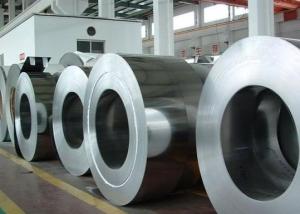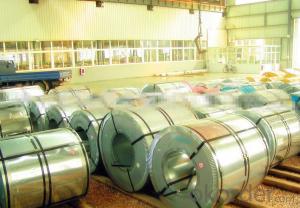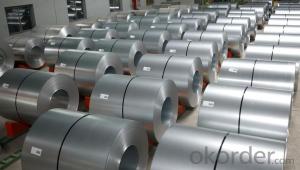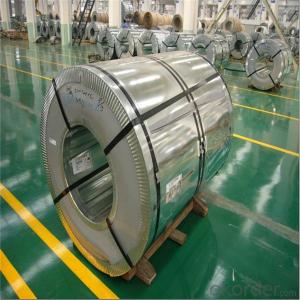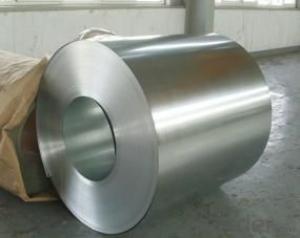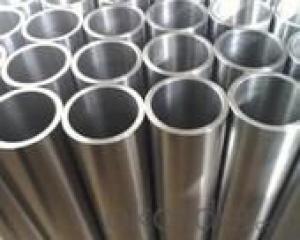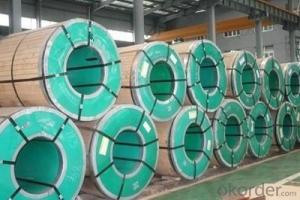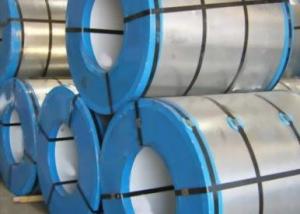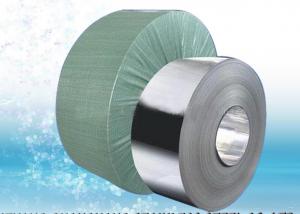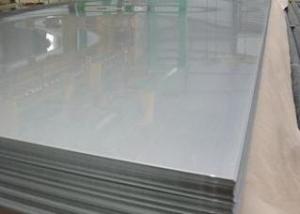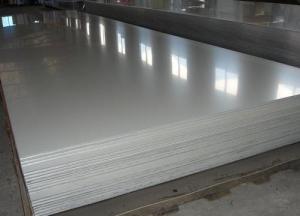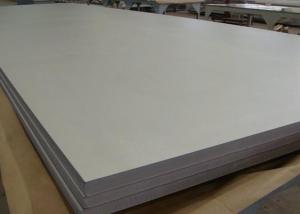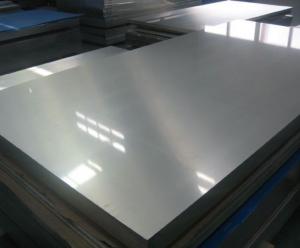316L Stainless Steel Coil
- Loading Port:
- China Main Port
- Payment Terms:
- TT or LC
- Min Order Qty:
- 1 Ton m.t.
- Supply Capability:
- 1000 Tons Per Month m.t./month
OKorder Service Pledge
OKorder Financial Service
You Might Also Like
316L Stainless Steel Coil
1. Chemical composition of 316L Stainless Steel Coil
C | Si | Mn | P | S | Ni | Cr |
Max0.03 | max1.00 | max2.00 | max0.045 | max0.03 | 10.00-14.00 | 16.00-18.00 |
2. Mechanical properties of 316L Stainless Steel Coil
Yield Strength | Tensile | Elongation | Hardness (HV) | Hardness (HRB) |
≥175 | ≥480 | ≥40 | ≤200 | ≤90 |
3. Standard of 316L Stainless Steel Coil : AISI, ASTM, GB, EN, DIN, JIS
4. Surface of 316L Stainless Steel Coil : 2B, NO.1, BA, NO.4, Hairline, SB, Mirror finish, Anti-skid, Cherkered etc.
5. Size of 316L Stainless Steel Coil :
Thickness: 0.3-3mm (cold rolled), 3-40mm (hot rolled)
Width: 1000mm or 1219mm or 1240mm for cold rolled, 1500mm for hot rolled.
Length: As customers' request.
6. MOQ of 316L Stainless Steel Coil : 1 Ton
7. Payment terms of 316L Stainless Steel Coil : T/T or L/C
8. Packing of 316L Stainless Steel Coil : Seaworthy package with wooden or Iron pallets with the paper and the steel strip,
or as customers' request.
9. Delivery time of 316L Stainless Steel Coil : Usually about 7 days after we confirming the order, or according to your quantity.
If you have any question or demand, pls feel free to contact me.
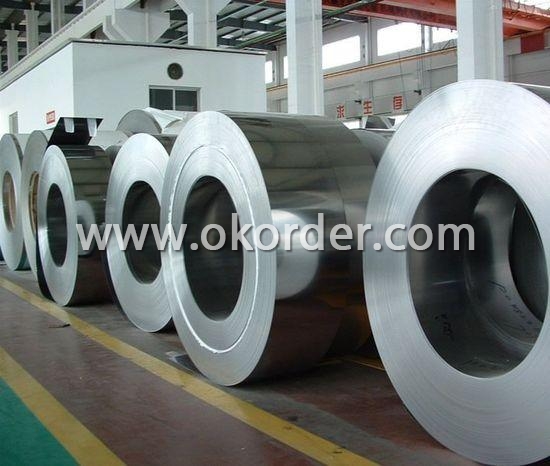
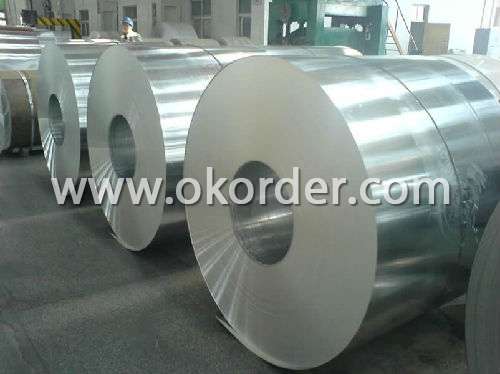
- Q: Are 111 stainless steel strips suitable for heat sinks?
- 111 stainless steel strips are unsuitable for heat sinks. Heat sinks are designed to effectively dissipate heat from electronic components and thus require materials with high thermal conductivity. Although stainless steel has numerous desirable properties, it lacks good thermal conductivity, particularly when compared to other metals like aluminum or copper that are commonly used for heat sinks. Consequently, it is advisable to utilize materials with higher thermal conductivity for heat sinks in order to guarantee efficient heat dissipation.
- Q: What are the factors affecting the creep resistance of 111 stainless steel strips?
- The factors affecting the creep resistance of 111 stainless steel strips can be numerous and include: 1. Composition: The chemical composition of the stainless steel strips, including the presence of alloying elements such as chromium, nickel, and molybdenum, can significantly impact its creep resistance. Higher levels of these elements generally improve resistance to creep deformation. 2. Microstructure: The microstructure of the stainless steel strips, including the size, distribution, and stability of the various phases and grain boundaries, can influence creep resistance. A fine and uniform grain structure with minimal grain boundary sliding is desirable for improved creep resistance. 3. Temperature: Creep resistance decreases as temperature increases. Higher temperatures promote the diffusion of atoms, resulting in increased creep deformation. Therefore, stainless steel strips intended for high-temperature applications should be designed to withstand the specific temperature range without significant creep deformation. 4. Stress level: The applied stress or load on the stainless steel strips can affect creep resistance. Higher stress levels can accelerate creep deformation, leading to reduced creep resistance. It is important to consider the stress levels that the strips will be subjected to during their intended service life. 5. Time: Creep resistance is time-dependent, meaning that the longer the stainless steel strips are subjected to a constant load or stress, the more susceptible they are to creep deformation. Therefore, the duration of the applied load or stress should be considered when assessing the creep resistance of 111 stainless steel strips. 6. Surface condition: The condition of the stainless steel strip's surface, including the presence of defects, scratches, or surface roughness, can influence its creep resistance. A smooth and defect-free surface can help minimize stress concentration and reduce the likelihood of localized creep deformation. 7. Environmental factors: The presence of aggressive environments, such as high-temperature gases or corrosive substances, can affect the creep resistance of stainless steel strips. Corrosion or oxidation can lead to the degradation of the material, reducing its creep resistance. 8. Heat treatment: The heat treatment process used during the manufacturing of stainless steel strips can significantly impact their microstructure and, consequently, their creep resistance. Proper heat treatment procedures, including annealing, quenching, and tempering, can optimize the material's creep resistance properties. It is important to note that these factors are interrelated and should be considered together when evaluating the creep resistance of 111 stainless steel strips.
- Q: Are stainless steel strips resistant to chloride stress corrosion cracking?
- Generally, stainless steel strips exhibit resistance to chloride stress corrosion cracking. The corrosion resistance properties of stainless steel are widely recognized, encompassing resistance to chloride stress corrosion cracking. This is attributed to the abundance of chromium in stainless steel, which generates a protective oxide layer on the material's surface, prohibiting the infiltration of chloride ions and subsequent corrosion. Nevertheless, it is vital to acknowledge that the resistance to chloride stress corrosion cracking may fluctuate depending on the specific stainless steel type and grade, as well as the environmental conditions in which the material is exposed. Thus, it is always advisable to refer to the manufacturer's specifications and guidelines to ensure the appropriate stainless steel grade is chosen for the intended application.
- Q: What are the different types of stainless steel strips?
- There are several different types of stainless steel strips, including austenitic, ferritic, martensitic, and duplex stainless steel strips.
- Q: What are the typical hardness values of stainless steel strips?
- The typical hardness values of stainless steel strips can vary depending on the specific grade and type of stainless steel being used. However, stainless steel strips generally have a hardness range between 150 and 250 on the Vickers hardness scale (HV). Some grades of stainless steel may have higher hardness values, reaching up to 300 HV or more, while others may have lower hardness values, closer to the lower end of the range. It is important to note that the hardness of stainless steel strips can also be influenced by factors such as the heat treatment process and the thickness of the strip.
- Q: Can stainless steel strips be used in jewelry making?
- Yes, stainless steel strips can be used in jewelry making. Stainless steel is a durable and hypoallergenic material that can be shaped and polished to create beautiful and long-lasting jewelry pieces. It is commonly used in the production of rings, bracelets, necklaces, and other accessories.
- Q: Are stainless steel strips resistant to magnetism?
- No, stainless steel strips are not generally resistant to magnetism. While stainless steel itself is not magnetic, it can become magnetic when it is cold-worked or if it contains certain elements such as nickel, manganese, or iron. These elements can create a magnetic or partially magnetic structure within the stainless steel, making it susceptible to magnetism. However, if the stainless steel strips are manufactured with low levels of these magnetic elements or are annealed (heated and cooled) in a way that removes their magnetic properties, they can be made non-magnetic. Overall, it is important to consider the specific composition and treatment of stainless steel strips to determine their magnetic properties.
- Q: What are the different types of surface textures for stainless steel strips?
- Stainless steel strips offer a range of surface textures, each with its own distinct qualities and visual appeal. Let's explore a few common options: 1. No.1 Finish: The most basic and widely used texture, it has a rough, dull appearance. It is created by hot rolling and is commonly used in industrial settings where appearance is not a priority. 2. No.2B Finish: Achieved through hot and cold rolling with annealing, it has a smooth, reflective look with a slightly less shiny finish than No.1. No.2B is popular in kitchen appliances, architectural components, and decorative applications. 3. No.4 Finish: Also called satin or brushed finish, it involves mechanical polishing with abrasives. This creates a consistent, linear appearance with low reflectivity. No.4 is favored in architectural and interior design for decorative purposes. 4. BA (Bright Annealed) Finish: Obtained through bright annealing, it enhances corrosion resistance and offers a highly reflective, mirror-like appearance. BA finish is ideal for applications where reflectivity and aesthetics are important, like automotive trim and decorative items. 5. No.8/Mirror Finish: The highest quality and most reflective texture, it undergoes a multi-step process of grinding, polishing, and buffing. This results in a flawless, mirror-like look. No.8 is commonly used in luxury architectural projects, high-end decorative applications, and luxury goods. These examples represent just a few of the surface textures available for stainless steel strips. The choice depends on specific requirements, including aesthetics, functionality, and durability.
- Q: What type of stainless steel is magnetic stainless steel?
- 1, 420- type "cutting class" martensitic steel, similar to Brandt's first high chromium stainless steel this. Also used in surgical knives, which can be made very bright.2 model 430- ferritic stainless steel for decorative purposes, such as automotive accessories. Good formability, but poor temperature resistance and corrosion resistance.3, 440- type high strength cutting tool steel, carbon is slightly higher, after appropriate heat treatment to obtain a higher yield strength and hardness can reach 58HRC, which belongs to the most hard stainless steel column. The most common example is razor blades".
- Q: Can stainless steel strips be used for automotive trim?
- Automotive trim can indeed utilize stainless steel strips. With its durability and resistance to corrosion, stainless steel proves to be a fitting material for automotive purposes. Vehicles can benefit from stainless steel trim strips, as they contribute to an elegant and refined aesthetic. These strips are versatile, capable of accentuating different areas of the vehicle, including the grille, window trim, door handles, and fenders. Moreover, stainless steel strips exhibit remarkable scratch resistance and are capable of enduring harsh weather conditions, making them an optimal selection for automotive trim.
1. Manufacturer Overview
| Location | Zhejiang,China |
| Year Established | 2010 |
| Annual Output Value | Above US$16Million |
| Main Markets | Japan, South America |
| Company Certifications | ISO9001:2000; |
2. Manufacturer Certificates
| a) Certification Name | |
| Range | |
| Reference | |
| Validity Period |
3. Manufacturer Capability
| a) Trade Capacity | |
| Nearest Port | Shanghai |
| Export Percentage | 60% |
| No.of Employees in Trade Department | 50 People |
| Language Spoken: | English;Chinese; Japanese |
| b) Factory Information | |
| Factory Size: | Above 80,000 square meters |
| No. of Production Lines | Above 8 |
| Contract Manufacturing | OEM Service Offered;Design Service Offered |
| Product Price Range | Average |
Send your message to us
316L Stainless Steel Coil
- Loading Port:
- China Main Port
- Payment Terms:
- TT or LC
- Min Order Qty:
- 1 Ton m.t.
- Supply Capability:
- 1000 Tons Per Month m.t./month
OKorder Service Pledge
OKorder Financial Service
Similar products
Hot products
Hot Searches
Related keywords

